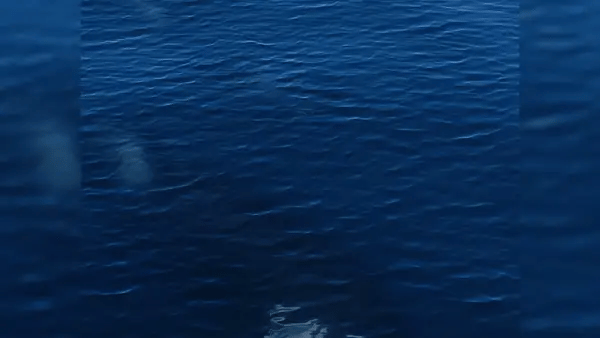5 MIN READ
3-13-2024
“Apex Beauty” The Killer Whale (Orcinus Orca)
Henry Bliss, 4ocean Story Producer
Embark on a journey beneath the ocean’s surface and learn more about the notorious Killer Whale (Orcinus Orca).
You're on the boat's edge, scanning the horizon. Suddenly, sleek black fins break the surface – orcas! Your heart races as you witness their graceful dance through the waves. In that moment, you're immersed in the raw beauty of the ocean and its magnificent inhabitants.
The Killer Whale, or Orcinus orca, is a remarkable apex predator found in oceans worldwide. Known for their striking black-and-white coloration, intelligence, and complex social structures, these marine mammals captivate scientists and enthusiasts alike. Here's an in-depth look at these majestic creatures:
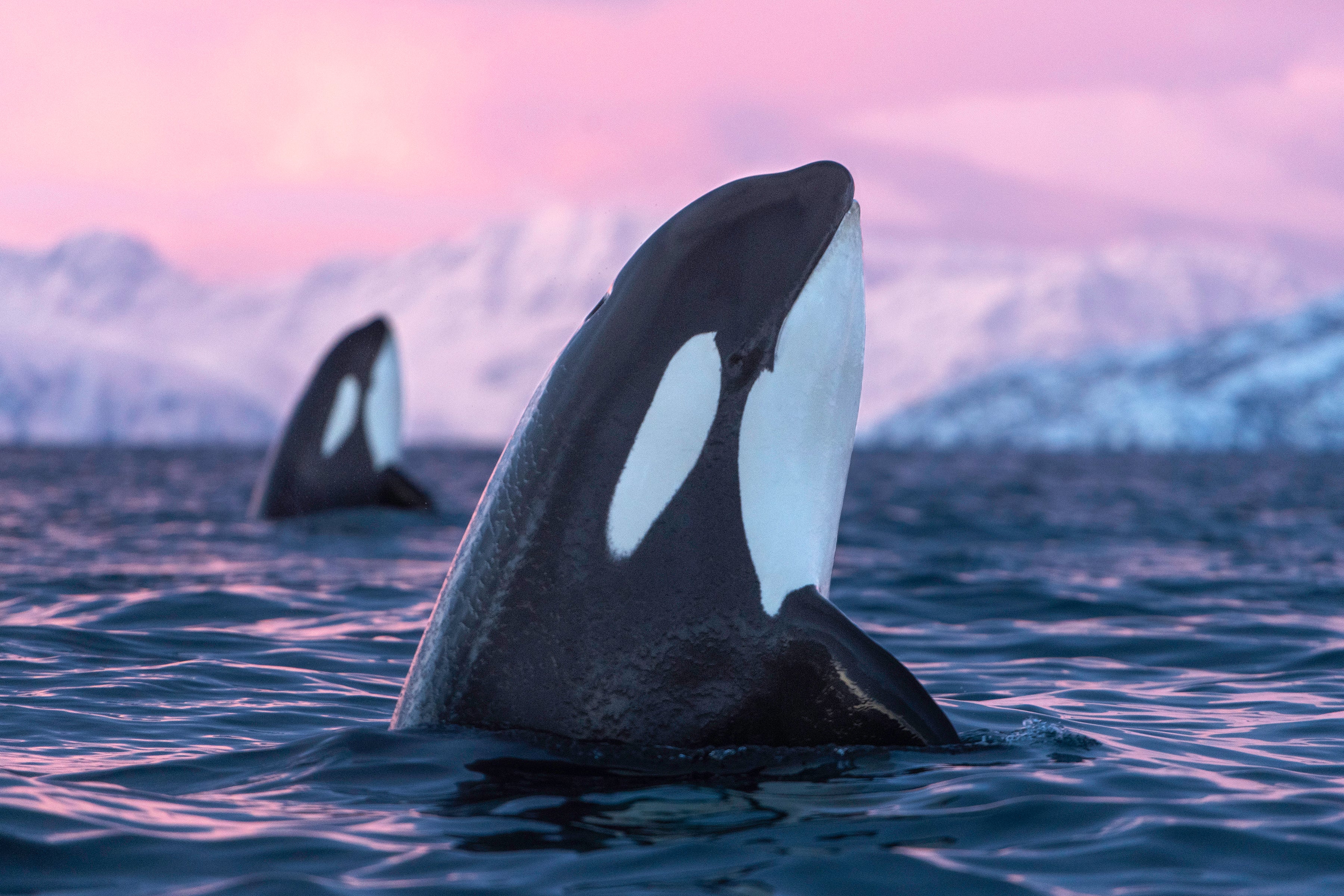
@wilkstrom_photography
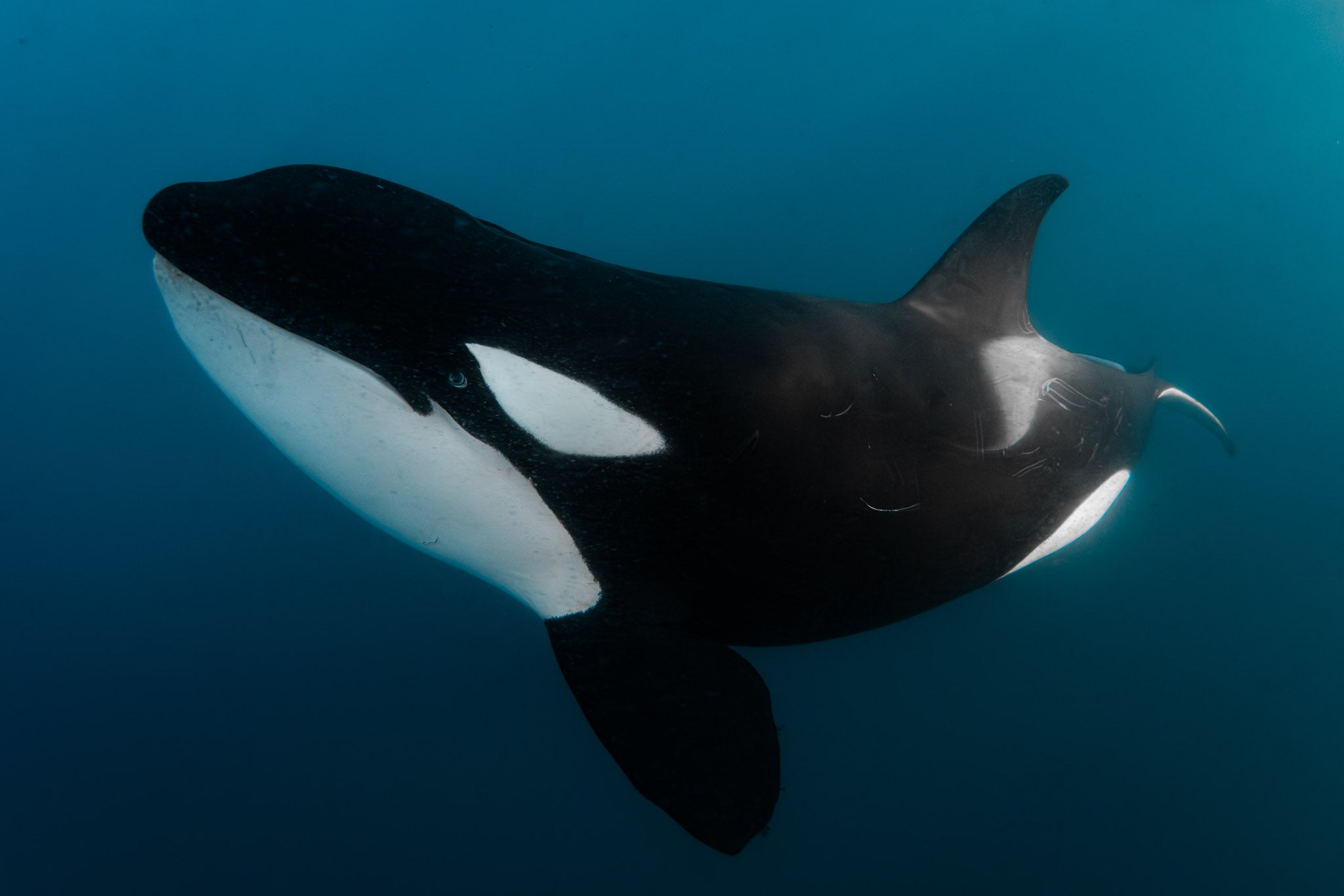
@evansbaudin
While all killer whales belong to the same species, they exhibit considerable variation in appearance, behavior, and diet, leading scientists to classify them into different ecotypes or populations based on their distinct characteristics and ecological niches.
Here are some of the main types of killer whales:
Resident Killer Whales: Primarily found in coastal regions and tend to stay within specific areas, hence the name "resident." They are known for their close-knit social structures and distinctive vocalizations. Resident killer whales typically feed on fish, primarily salmon, and have specialized hunting techniques adapted to their prey.
Transient Killer Whales: Known as Bigg's killer whales, are more nomadic than residents. They roam over larger ranges and are often found in open ocean environments and coastal areas. Transients primarily prey on marine mammals such as seals, sea lions, and cetaceans. They exhibit a different vocal repertoire and hunting behavior compared to residents.
Offshore Killer Whales: Inhabiting deeper offshore waters, making them less frequently observed than residents and transients. They are known to travel in smaller groups and are thought to feed primarily on fish and squid. Due to their elusive nature, much remains unknown about offshore killer whales.
Type D Killer Whales: Being a relatively new type of killer whale, they are distinguished by their smaller size, rounded heads, and unique genetic characteristics. They have been observed in the Southern Ocean and are thought to feed on fish primarily. However, much remains to be learned about their behavior and ecology.
Antarctic Type A and B Killer Whales: These two types of killer whales are found in the Southern Ocean around Antarctica. Type A killer whales are known for their distinctive white eyepatches and primarily feed on minke whales. Type B killer whales have a more varied diet, including seals, penguins, and fish.
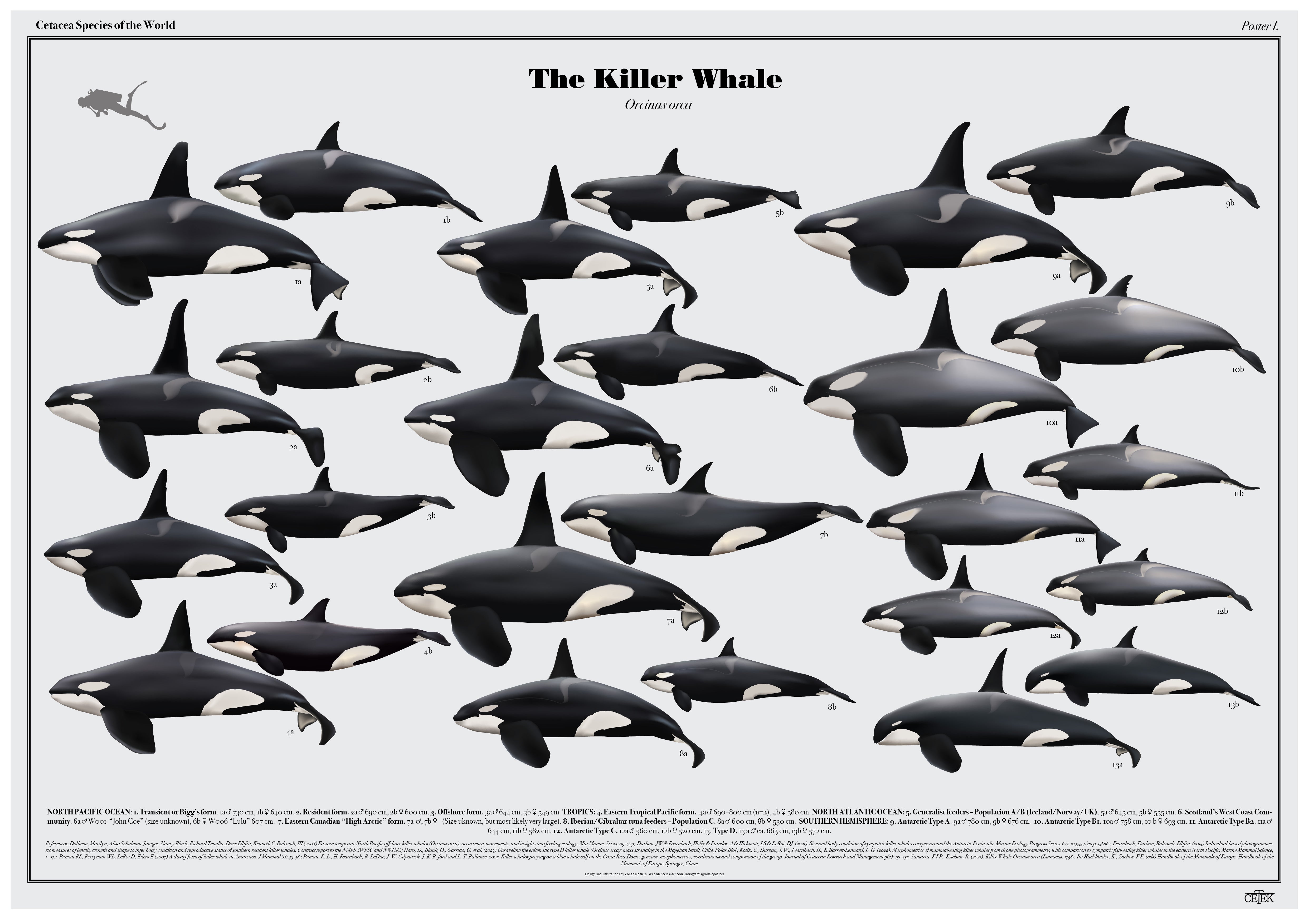
@whaleposters
Habitat Overview:
Killer whales are highly adaptable and can be found in many marine habitats, from polar regions to tropical seas. Their habitat preferences vary depending on their ecotype and prey availability.
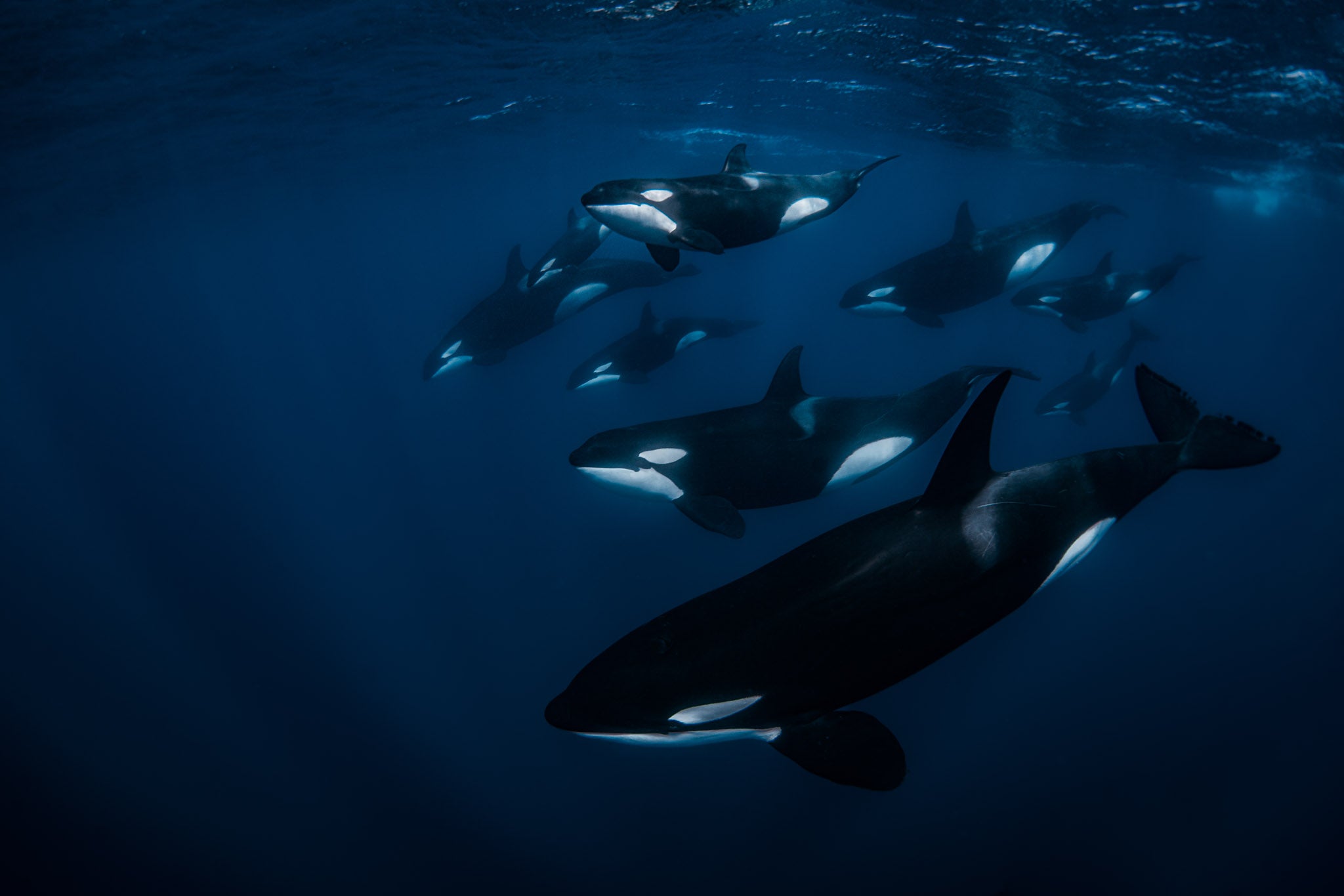
@evansbaudin
Coastal Waters: Many killer whale populations, particularly resident ecotypes, inhabit coastal waters near shore. These areas often have high productivity and support abundant prey species such as salmon, herring, and other fish.
Open Ocean: Transient killer whales have a more nomadic lifestyle and are often found in open ocean environments far from shore. They may roam vast distances in search of marine mammal prey, including seals, sea lions, and other cetaceans.
Pelagic Zones: Offshore killer whales are known to inhabit deeper offshore waters, including pelagic zones far from coastal areas. These whales may travel in smaller groups and are adapted to hunting fish and squid in deeper waters.
Polar Regions: Killer whales are well-adapted to polar environments and are found in both the Arctic and Antarctic regions. They may inhabit sea ice-covered areas in search of prey such as seals, penguins, and other marine mammals.
Tropical Seas: While less common, killer whales can also be found in tropical and subtropical seas, particularly in areas with high productivity and diverse marine ecosystems. These regions may provide opportunities for hunting fish and other prey species.
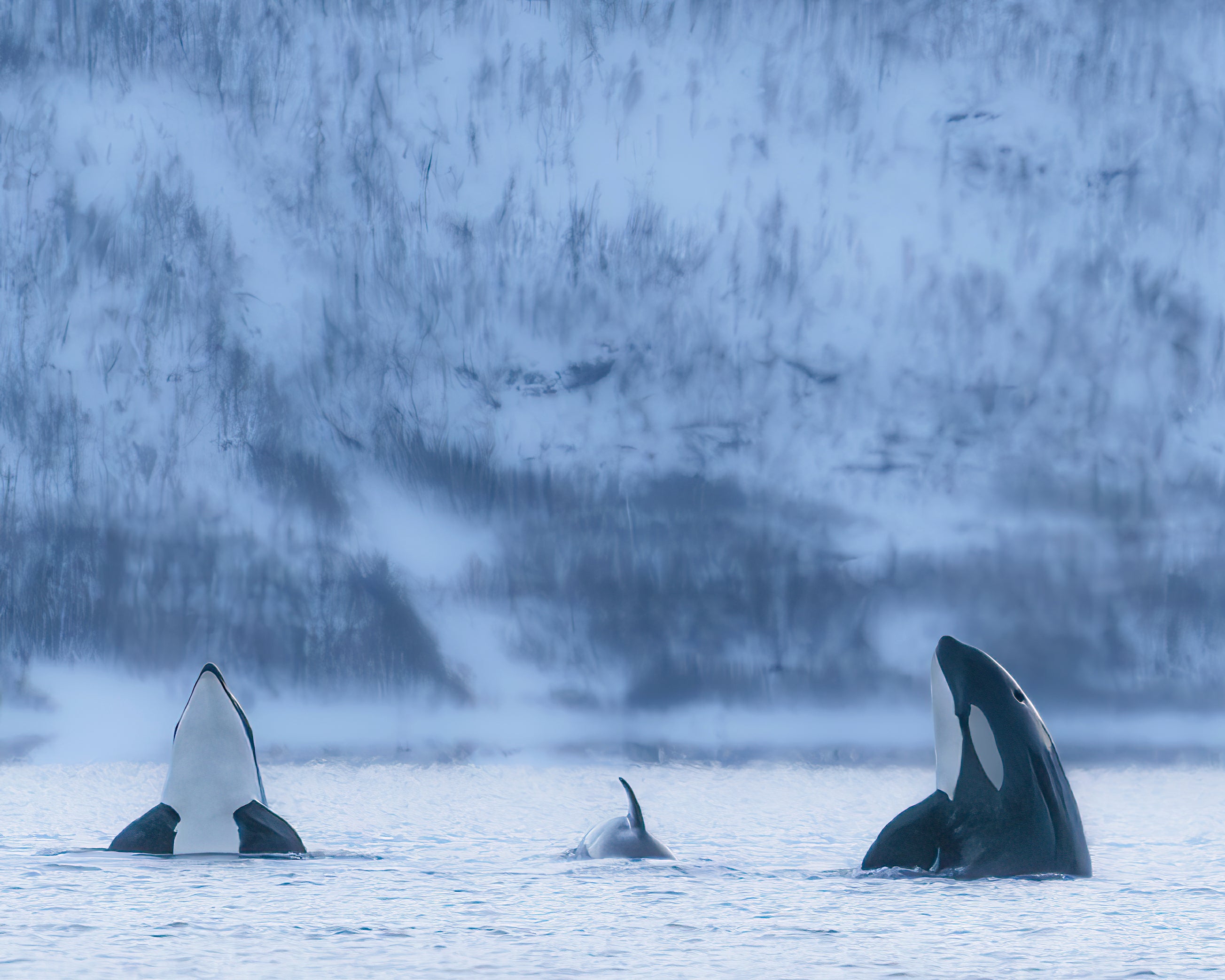
@wilkstrom_photography
Diet:
As apex predators these predators have a diverse diet that varies depending on their ecotype, geographic location, and the availability of prey species.
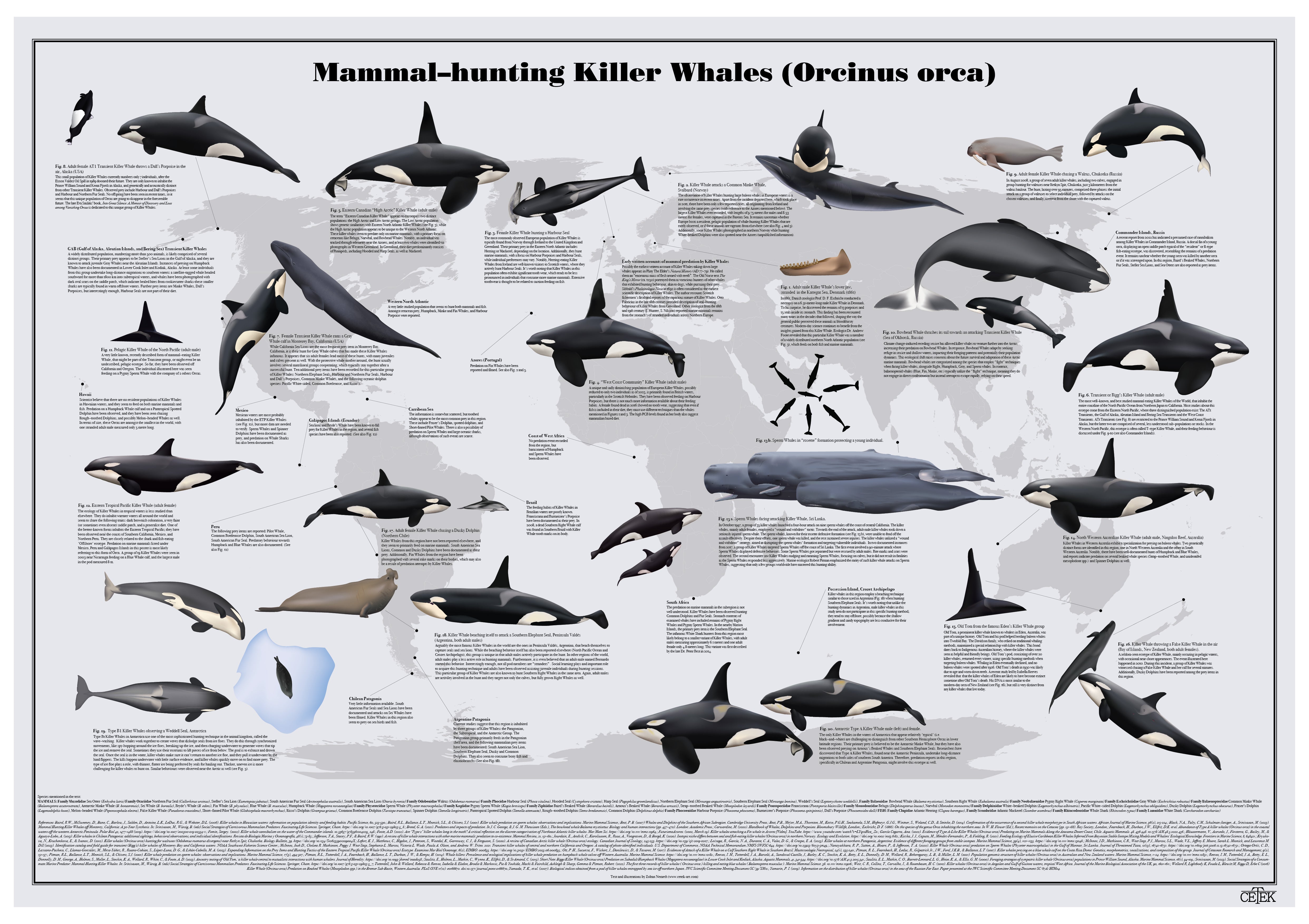
@whaleposters
Fish: Many killer whale populations, particularly resident ecotypes, predominantly feed on fish. Common prey species include salmon, herring, cod, and other fish in coastal and pelagic waters. They employ sophisticated hunting strategies, such as cooperative hunting and corralling prey into tight groups, to capture fish efficiently.
Marine Mammals: Transient killer whales specialize in hunting marine mammals, including seals, sea lions, dolphins, and other cetaceans such as smaller whales and porpoises. They are apex predators in their ecosystems and use stealth and coordinated attacks to ambush their prey.
Cephalopods and Other Prey: Killer whales consume cephalopods like squid, octopus, and occasional crustaceans and seabirds. These items may supplement their diet, particularly in regions where fish and marine mammals are less abundant.
Specialized Diets: Some killer whale populations have specialized diets adapted to their local ecosystems. For example, Antarctic killer whales (Type A and Type B) primarily feed on minke whales, seals, and penguins, depending on their ecotype. Similarly, offshore killer whales may prefer certain fish species in deeper waters.
Behavior:
Being highly intelligent and social, marine mammals are known for their complex behaviors. Their behavior varies depending on their ecotype, social structure, and environmental conditions
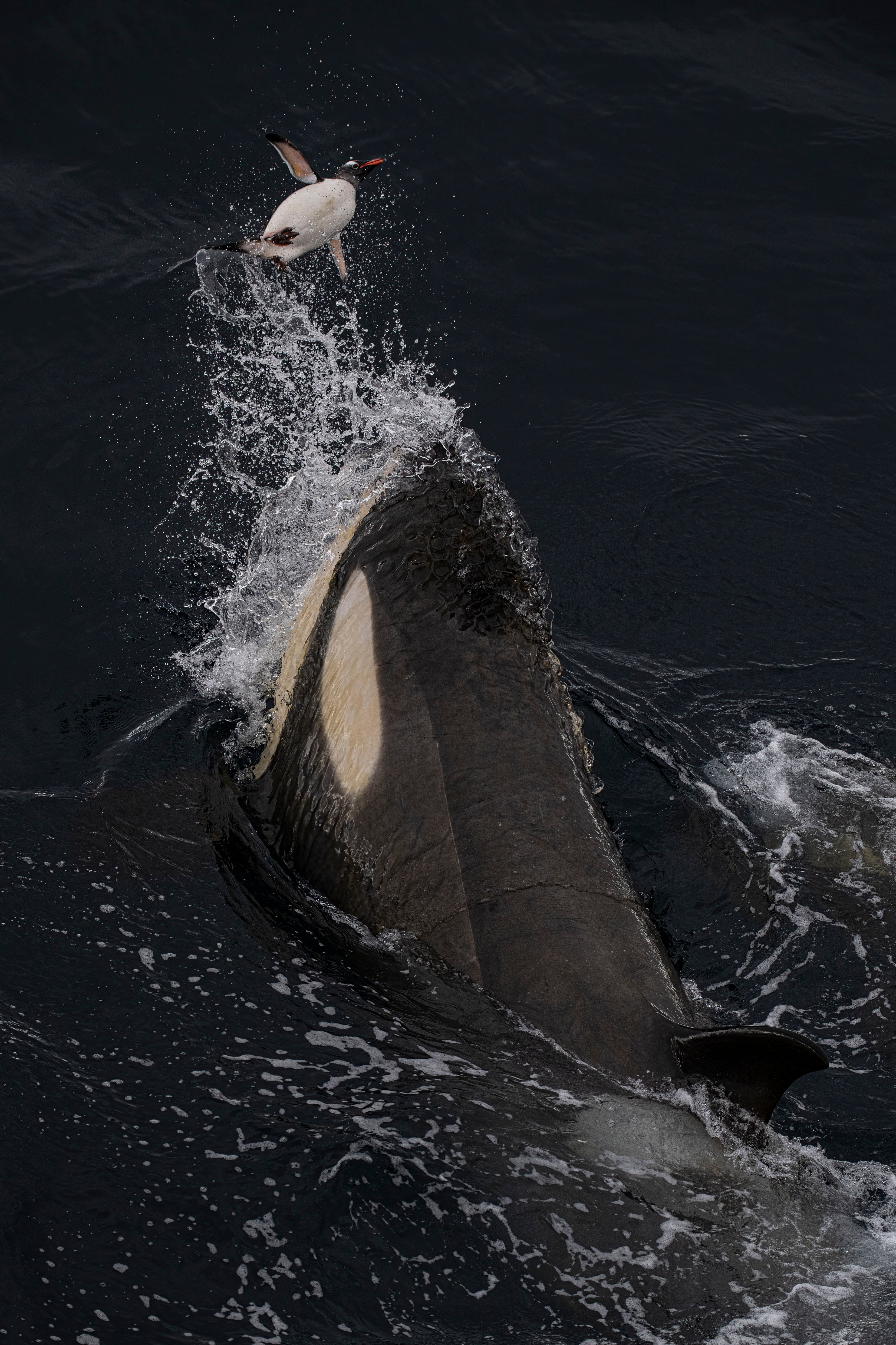
@wilkstrom_photography
Social Structure: Killer whales live in cohesive social groups known as pods, typically consisting of several individuals, including adult females, their offspring, and sometimes unrelated individuals. Pods can range from a few individuals to over 50 members, with resident killer whale pods generally larger than transient pods.
Communication: Killer whales are highly vocal animals and use a diverse repertoire of clicks, whistles, and pulsed calls to communicate with each other. These vocalizations are crucial in maintaining social bonds, coordinating hunting activities, and navigating their environment. Different ecotypes and populations have distinct dialects, allowing them to recognize members of their own group.
Hunting Strategies: Killer whales are apex predators and employ various hunting strategies to capture prey. Resident killer whales often hunt cooperatively, using synchronized swimming and vocalizations to corral fish into tight groups before striking. Transient killer whales, on the other hand, specialize in hunting marine mammals and employ stealth and coordinated attacks to ambush their prey.
Play Behavior: Killer whales are known for their playful nature, engaging in various social and solitary activities. Play behavior includes breaching (leaping out of the water), spy hopping (raising their heads vertically out of the water), and flipper slapping. These behaviors serve social bonding, communication, and learning purposes.
Maternal Care: Adult female killer whales play a central role in caring for their offspring, with calves typically staying close to their mothers for several years. Mothers teach their calves essential hunting and social skills, including how to hunt effectively and navigate their environment. Close-knit family bonds within pods contribute to the overall stability and cohesion of killer whale societies.
Migration and Movement: Killer whales are highly mobile animals and can travel vast distances in search of prey and suitable habitat. While some populations exhibit seasonal migrations, others may have more nomadic lifestyles, roaming over large ranges throughout the year.
Intelligence and Learning: Killer whales are among the most intelligent animals on the planet, with complex problem-solving abilities and a learning capacity. They have been observed using tools, coordinating complex hunting strategies, and even mimicking the calls of other species. This intelligence enables them to adapt to their ecosystem's changing environmental conditions and challenges.
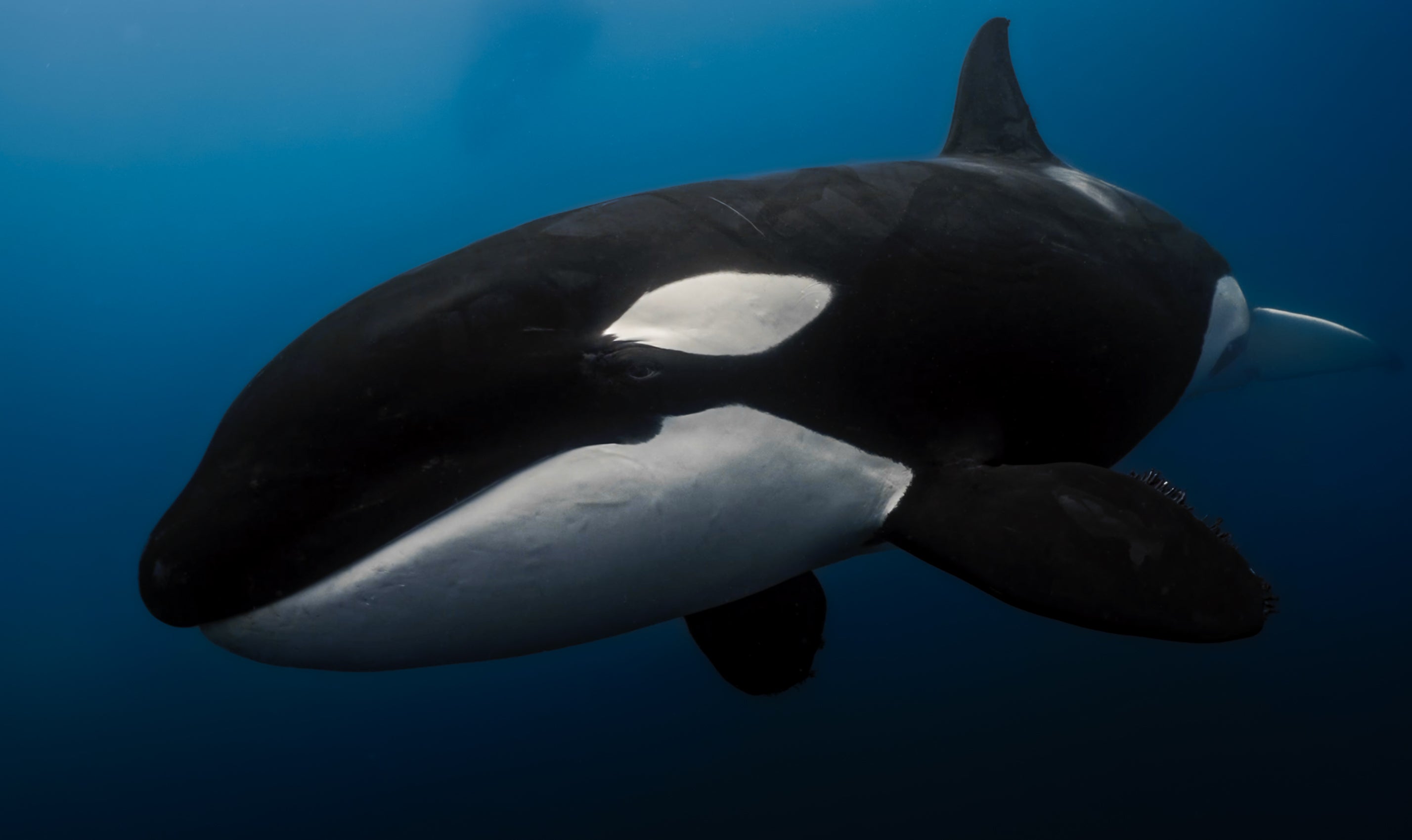
@alexsharks_ onboard
@apexoceandivers
How plastic pollution impacts Killer Whales?
Ingestion: Killer whales may mistakenly consume plastic debris, either directly or indirectly through contaminated prey. Ingested plastic can cause internal injuries, blockages in the digestive system, and malnutrition, leading to serious health issues and even death.
Toxicity: Plastic materials often contain harmful chemicals, such as phthalates and bisphenol A (BPA), which can leach into the marine environment. When ingested by killer whales, these toxic chemicals can accumulate in their tissues and organs, disrupting hormonal balance, immune function, and reproductive health.
Entanglement: Killer whales are at risk of becoming entangled in plastic debris, such as fishing nets, lines, and other marine debris. Entanglement can restrict their movement, cause injuries, and lead to drowning or suffocation.
Habitat Degradation: Plastic pollution can degrade marine habitats, including coastal areas and feeding grounds, which are essential for killer whale survival. Accumulated plastic debris can smother seabed habitats, disrupt food chains, and alter ecosystem dynamics, ultimately impacting the availability of prey for killer whales.
Microplastics: Microplastics, tiny plastic particles less than 5 millimeters in size, are particularly concerning for killer whales. These particles can be ingested by prey species and accumulate in the food chain, ultimately reaching killer whales. Microplastics can carry toxic chemicals and pose a health risk to marine organisms, including killer whales.
With its striking appearance, complex social dynamics, and impressive hunting prowess, the Killer Whale stands as one of the ocean's most iconic and awe-inspiring creatures. As stewards of the marine environment, understanding and protecting these magnificent animals is essential for the health of our oceans and the preservation of biodiversity.

Bracelet of the Month: Orca
Pull 5 pounds of trash from the ocean with our limited edition Orca Bracelet, only available March 2024!
Shop now + Clean the Ocean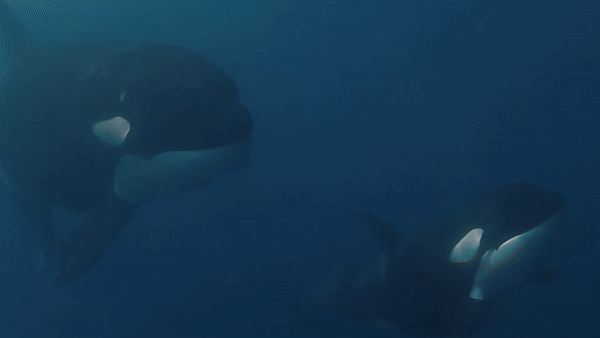
We’re always on the lookout for incredible stories from our community!
Pitch yours to our team at stories@4ocean.com.

